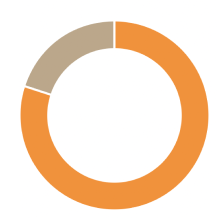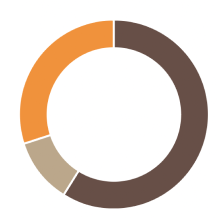Evaluation of the 2024-2025 UK Influenza Season Prediction
The 2024/2025 UK influenza season prediction was based on Australia's flu season trends, as is standard practice. This report assesses the accuracy of that prediction by comparing actual flu activity in the UK against the forecasted trends.
This article was written by Adam Hadfield, Head of Clinical Governance at GoodShape.
Prediction summary:
The original forecast, based on Australia's severe flu season (January–August 2024), anticipated:
- A sharp rise in cases from early winter
- A mid-season peak, mirroring Australia’s peak in July
- A highly transmissible and potentially more virulent strain, indicated by Australia's significant case burden (300,307 cases by mid-August 2024)
- Increased pressure on the NHS and public health services, necessitating proactive interventions such as flu vaccinations, remote work policies, and hygiene reinforcement.
Comparison with actual UK influenza data
Flu activity and peak timing
- The UK saw a notable rise in flu cases from November 2024, aligning with the predicted early start of the season
- Peak flu activity occurred in January 2025, slightly later than Australia's peak (July 2024)
- While the mid-season peak was expected, the exact timing differed slightly
- Influenza B cases increased significantly among younger populations, which was not explicitly predicted but aligns with seasonal variation trends.
Severity and hospitalisations
- The season proved severe, as anticipated, with hospitalisation rates spiking in December 2024 and remaining high into early 2025
- Total flu-related hospitalisations were slightly lower than expected, likely due to a higher-than-anticipated vaccine uptake
- The dominant flu strains included A(H3N2) and B/Victoria, with A(H3N2) responsible for more severe outcomes, especially among older populations
Vaccine effectiveness and public health measures
- The flu vaccine matched circulating strains well, contributing to reduced hospitalisation rates compared to worst-case projections
- Public health campaigns successfully increased flu vaccination uptake, particularly in high-risk groups
- Workplace absenteeism due to flu remained high but was mitigated by remote working policies in some sectors
Accuracy of the prediction
| Predicted outcome | Actual outcome | Accuracy |
| Early, severe flu season | Early start and severe cases, but peak occurred slightly later | High |
| Mid-season peak | Peak in January (slightly later than expected) | Moderate |
| Highly transmissible and virulent strain | Strains were transmissible but vaccine matched well | Moderate |
| Increased hospital admissions | Hospitalisation rates high but lower than worst-case projection | High |
| Workplace absenteeism due to flu | High absenteeism but mitigated in some workplaces | High |
| NHS strain and public health burden | Flu demand was high, but mitigations helped manage impact | High |
Key learnings and future considerations
- Predictive models remain valuable but require flexibility – The UK flu peak occurred slightly later than anticipated, highlighting the need to adjust for regional factors
- Vaccination uptake was a critical variable – A strong match between the vaccine and circulating strains helped reduce severity, suggesting that predictions should integrate potential vaccination coverage scenarios
- Influenza B played a greater role than expected – Future forecasts should consider age-stratified predictions, as younger demographics were affected more significantly by influenza B
- Public health preparedness helped mitigate impact – The NHS managed the case burden better than expected due to vaccination campaigns and early public messaging.
Conclusion
The 2024/2025 influenza season unfolded largely as predicted, confirming the reliability of using Australia’s flu season as an early indicator. The severity and transmissibility aligned closely with expectations, although the peak occurred later than forecasted. Effective vaccination campaigns and public health interventions helped reduce the overall hospitalisation burden. Future predictions should account for regional variations in peak timing, vaccine effectiveness, and demographic differences in strain impact.
By refining our predictive approaches and enhancing public health preparedness, we can continue to improve seasonal influenza response strategies in the UK.
“We have been using the GoodShape service since 2007”

Lorem ipsum dolor
sit amet, consectetuer
adipiscing.

Lorem ipsum dolor
sit amet, consectetuer
adipiscing.
Find out how we can help.
Fill out the form below and one of our team will be in touch to arrange a meeting.



